| Your browser is not supported. | ||
|
Please browse our site using any of the following options:
| ||
Winter Camping Tips: How To Stay Warm While Camping In Winter
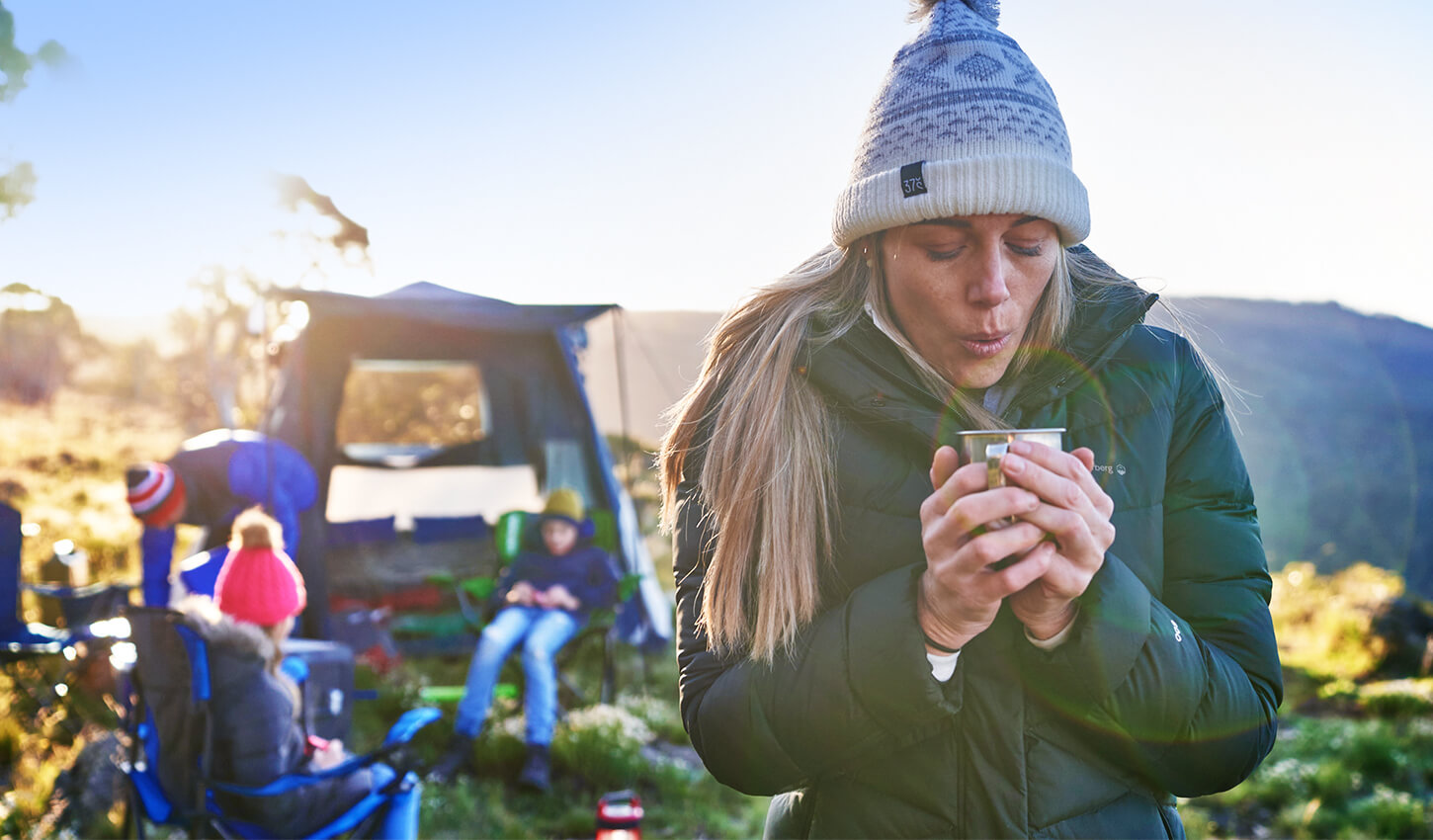
If you're a seasoned summer and spring camper, switching out your summer kit for the cold is really simple. From picking the right sleeping back to having the best winter clothing, there's an array of options that are designed to weather almost any storm. Embracing the winter wilderness is a thrill unlike any other for camping enthusiasts. Yet, as the frosty winds howl and snow blankets the landscape, mastering the art of staying warm becomes essential. In this guide on the best winter camping tips, seasoned campers and winter wanderers alike will uncover essential tips and tricks to ward off the chill, ensuring every snowy adventure is a cosy and unforgettable experience.
Quick Links
- Winter Camping Tips FAQs
- Switch To A Higher Sleeping Bag Rating
- Adding Accessories To Warm Things Up
- Choosing The Right Tent For Hail Or Shine
- Camping Beds For Comfort In The Cold
- Clothing: Base, Middle & Outer Layers
Winter Camping Tips FAQs
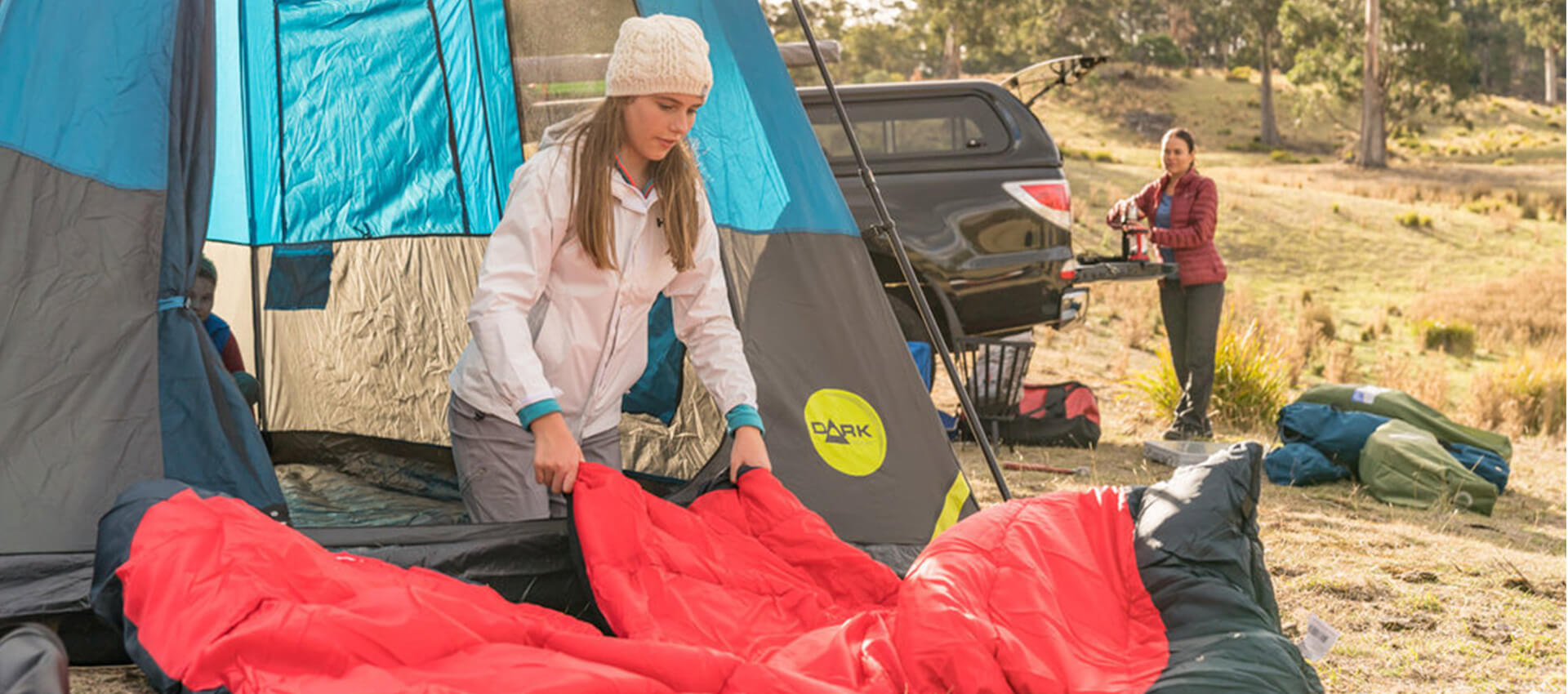
How do you camp comfortably in the winter?
To camp comfortably in winter, start with the right gear: a four-season tent, an insulated sleeping bag, and a sleeping pad. Layer clothing for warmth, avoiding cotton. Stay dry to retain heat - moisture-wicking materials are key. Hot meals and beverages provide internal warmth. Keep essentials, like a headlamp and first aid kit, handy. Embrace the cold with proper preparation and winter camping becomes a serene adventure.
How do you keep a tent warm in the winter?
To keep a tent warm in winter, choose a proper campsite with natural windbreaks. Use a four-season tent with a rainfly and vestibule for added insulation. Lay a thick tarp or groundsheet beneath your tent to prevent heat loss from the ground. Inside, use a quality sleeping bag rated for cold temperatures and insulating sleeping pads. Ventilate carefully to prevent condensation. Seal any gaps to keep warmth in.
How hard is winter camping?
Not at all - if you know what you're doing. Winter camping, while challenging, offers a unique and rewarding adventure for outdoor enthusiasts. Embracing the serene beauty of snow-covered landscapes brings a sense of tranquillity. With proper gear and preparation, the crisp air and quiet surroundings create an unforgettable experience. From cosy campfires to stunning snowy vistas, winter camping challenges are opportunities for personal growth and cherished memories in the great outdoors.
How many layers do I need for winter camping?
For winter camping, 3 to 4 layers. Start with a moisture-wicking base layer to keep sweat away from the skin. Add insulating layers like fleece or wool for warmth, and a waterproof and windproof outer layer to shield from the elements. Adjust layers based on activity level and weather conditions. The key is versatility - multiple layers allow for easy regulation of body temperature throughout your winter adventure.
How can I heat my tent in winter without electricity?
Heating a tent in winter without electricity requires safe methods. Use a portable wood stove designed for tents, providing both warmth and a cooking surface. Alternatively, heat stones near a fire and carefully place them inside a metal container inside the tent (avoiding direct contact with flammable materials). Insulate the tent floor and walls with blankets or tarps for added heat retention. Remember to ventilate to avoid carbon monoxide buildup.
Switch To A Higher Sleeping Bag Rating
Whether you're sleeping under the stars in a tent or at someone's weekender, having the right sleeping bag is absolutely crucial. When it comes to how to stay warm camping in winter, the right sleeping bag is going to make a difference. You'll be well-served to take time out and ensure that your sleeping bag has the right comfort rating for the colder conditions. When it comes to buying a winter-worthy sleeping bag - or to help you decide if your existing bag is up to the job - look at the comfort rating for both comfort and survival. The comfort rating tells you the lowest temperature it can handle for an enjoyable sleep. Below this level, you're likely to be kept awake because you're not warm enough. The limit rating of a sleeping bag relates to survival for up to six hours in hazardous conditions that can result in health problems - like frostbite and exposure - as opposed to the level of warmth needed to get a good night's sleep. Can't invest in a new sleeping bag? You can upgrade your 1 or 2-season bag with a liner to increase the comfort level.
Adding Accessories To Warm Things Up
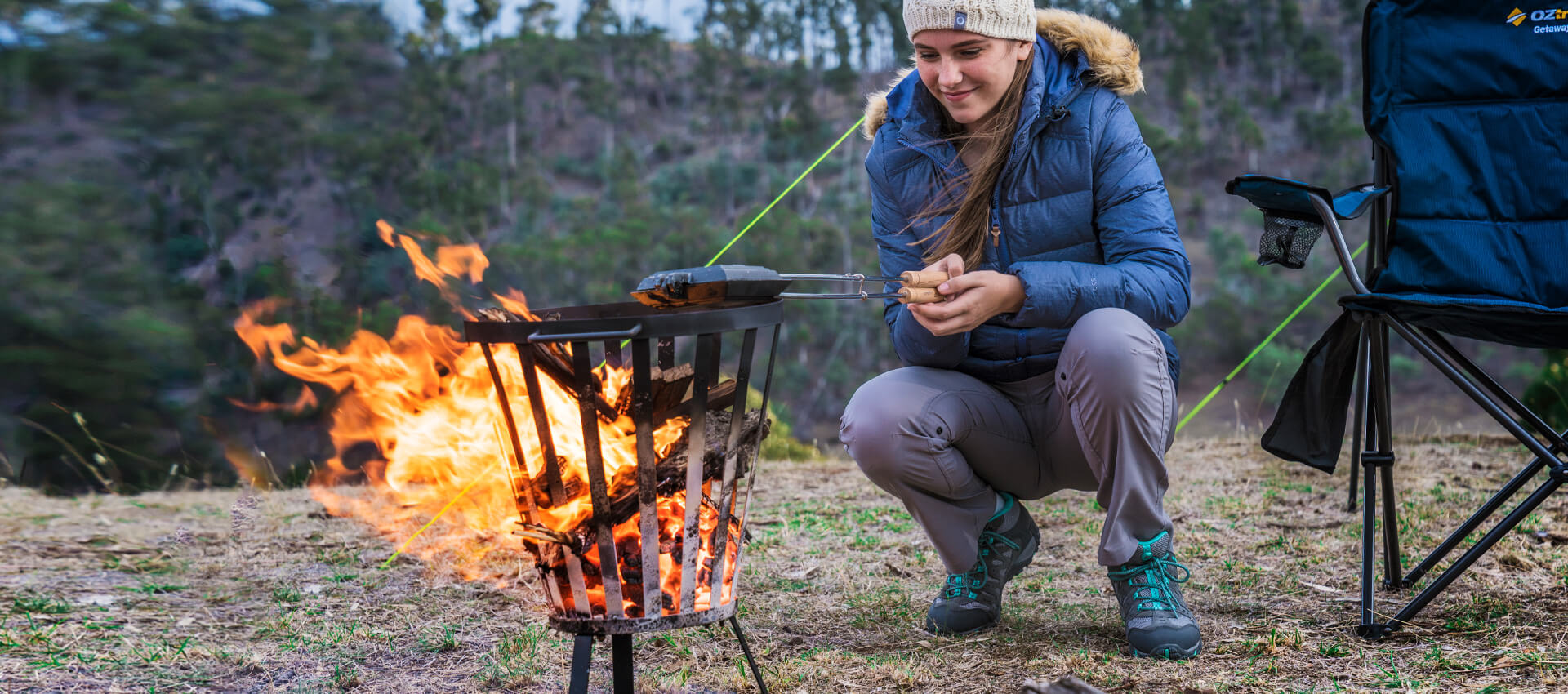
Keeping warm camping in winter isn't to be taken lightly. Apart from ruining your camping experience, you could end up compromising your health or, in extreme conditions, find yourself in a life-threatening situation. Adding some camping heaters or heating accessories to your winter camping equipment list will ensure you get to truly enjoy the experience of camping in the colder months. The heating solution that's right for you depends largely on the fire restrictions of your camping site. Where campfires are not permitted, there's a range of propane and butane heaters loaded with safety features to get you through the cold days and nights, and without taking up excessive room in your pack. Where it's possible, there's nothing like winding down after a day's activities in front of an open fire with a tasty meal and your favourite drink - or roasting marshmallows with the younger (or young-at-heart) campers. Fire pits make a safe, responsible and environmentally friendly campfire possible and, with BBQ options available, enjoying your favourite grilled foods is a breeze. And if you're looking for personal comfort, grab a few hand and feet warmers - they're perfect for pockets!
Choosing The Right Tent For Hail Or Shine
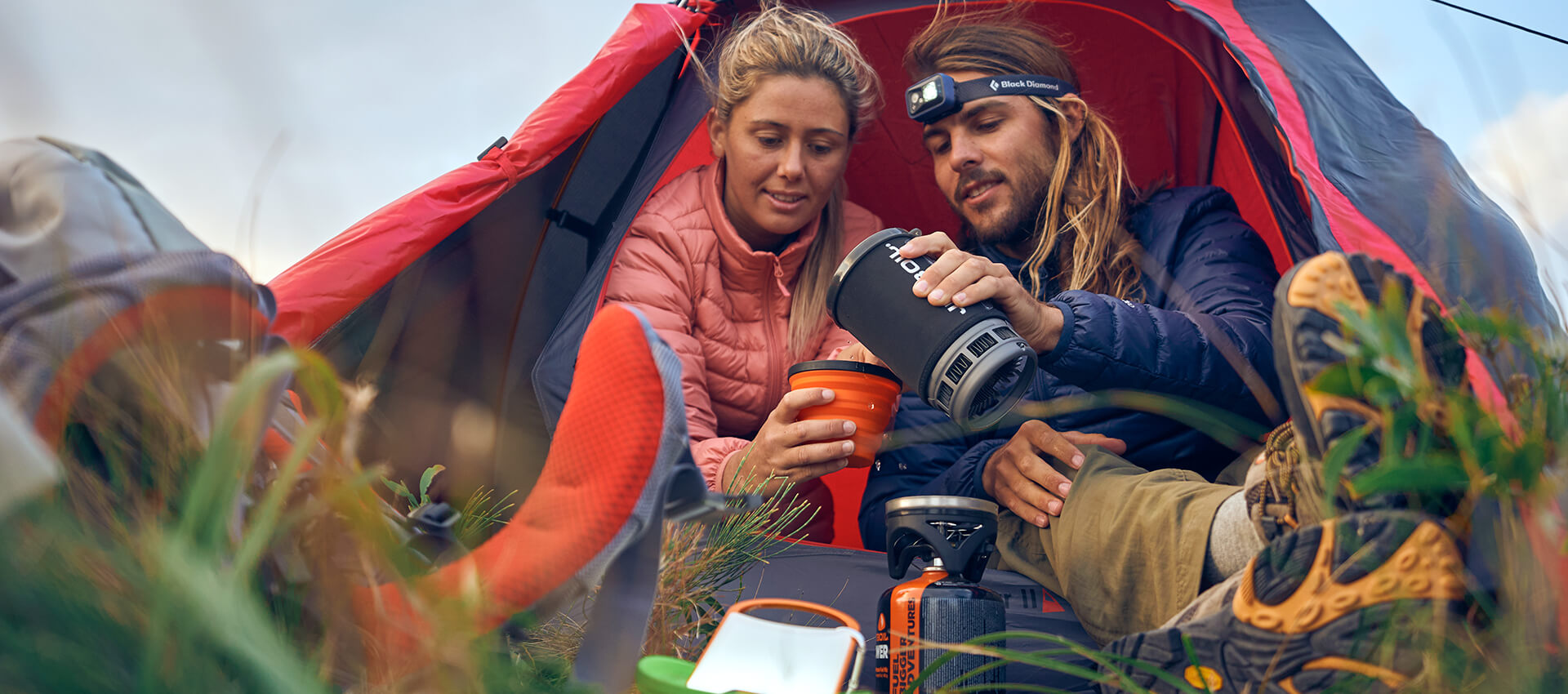
How well your tent handles the weather also plays a role in making or breaking a winter camping experience. In the winter months, your tent needs to withstand not only the cold but also extreme weather conditions like heavy rain, snow and winds. When looking at buying a tent that's capable of handling anything, pay particular attention to the tent's rating. In the vast majority of cases, you should be looking for a 4-season rated tent that's capable of withstanding heavy rain, heavy snow and strong winds. The extremes of Australia's weather in the winter months means you should also consider the ease of a tent's set-up and tear-down. Larger tents need more hands and, with fewer daylight hours available in winter, a quick set-up after a day's driving might be the order of the day. Instant-Up Tents are popular with winter camping enthusiasts.
Tent Materials For Winter
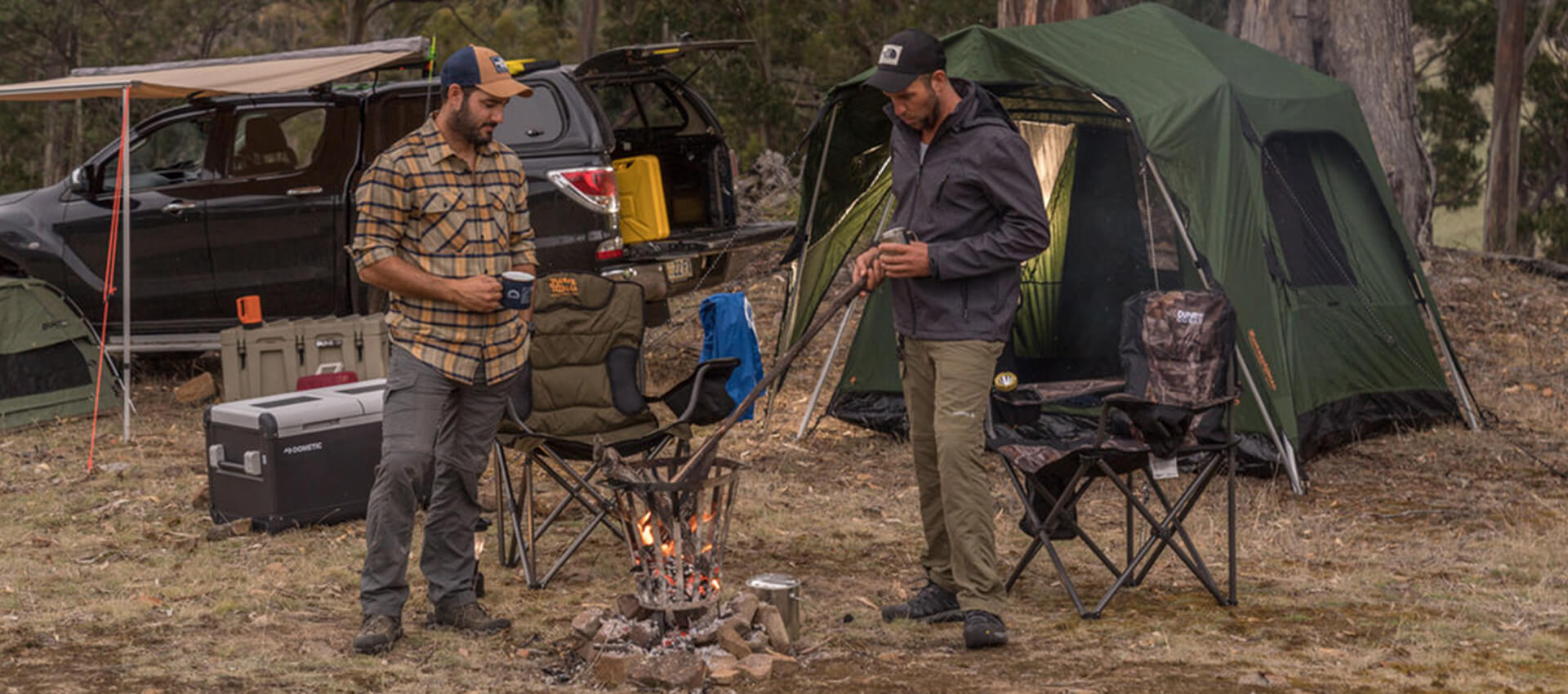
As well as the weather-rated performance, the material that your tent is made from is an important consideration for camping when it's cooler. Tents made from nylon and polyester provide adequate waterproofing in most cases, making them ideal for backpackers and people who are looking to minimise the weight of their packs. Polyester is thicker than nylon, which means it is longer-lasting. Canvas tents need to be seasoned to withstand wet weather but are cool in summer, warm in winter and made of natural fibres and are ideal for year-round use. Polycotton tents are lighter and stronger than cotton and usually have a good waterproof rating, which makes them a popular choice for winter camping enthusiasts.
Camping Beds For Comfort In The Cold
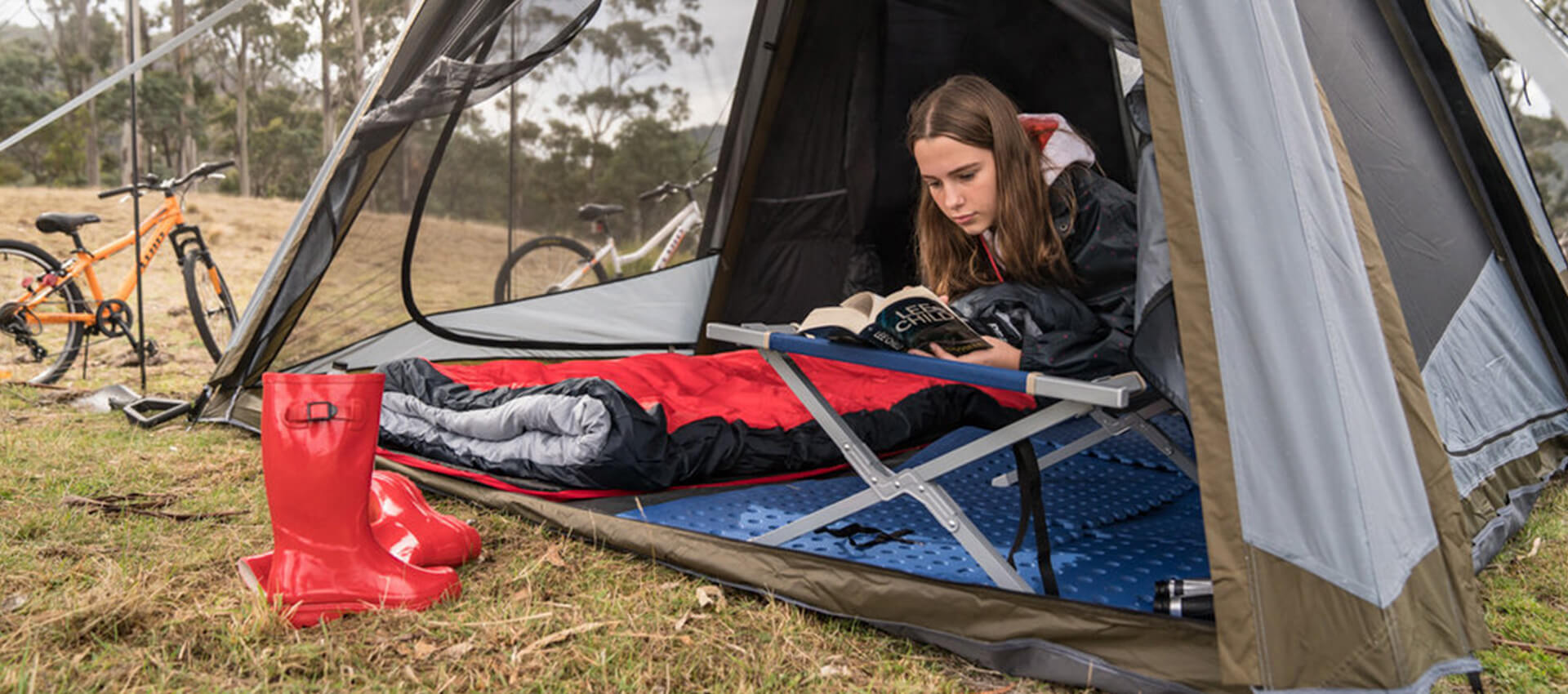
Sleeping comfort is always an individual preference but, when choosing camping beds for winter, it pays to keep the following points in mind. Sleeping mats are lightweight, versatile, compact and easy to set up. When considering a mat, make sure you look at the R-value. A sleeping mat's R-value is its ability to insulate a user from the ground, usually on a scale of 0-6. The higher the R-value, the warmer it will be. Fold-out beds are the choice of many campers but, because they're higher off the ground, this can allow cold air to circulate under the bed, which means you're likely to be colder. If a fold-out bed is your preference, you'll need to consider insulation - like a mat or blanket - to keep the cold air from getting to your skin at night. Like fold-out beds, air mattresses traditionally don't offer much in the way of insulation, so you can end up feeling colder in the middle of the night. Again, insulating your mattress with a mat or blanket on the ground and on the insulated mat mattress' contact points - not to mention a sleeping bag with the right comfort rating - will play an important role in keeping you warm.
Clothing: Base, Middle & Outer Layers
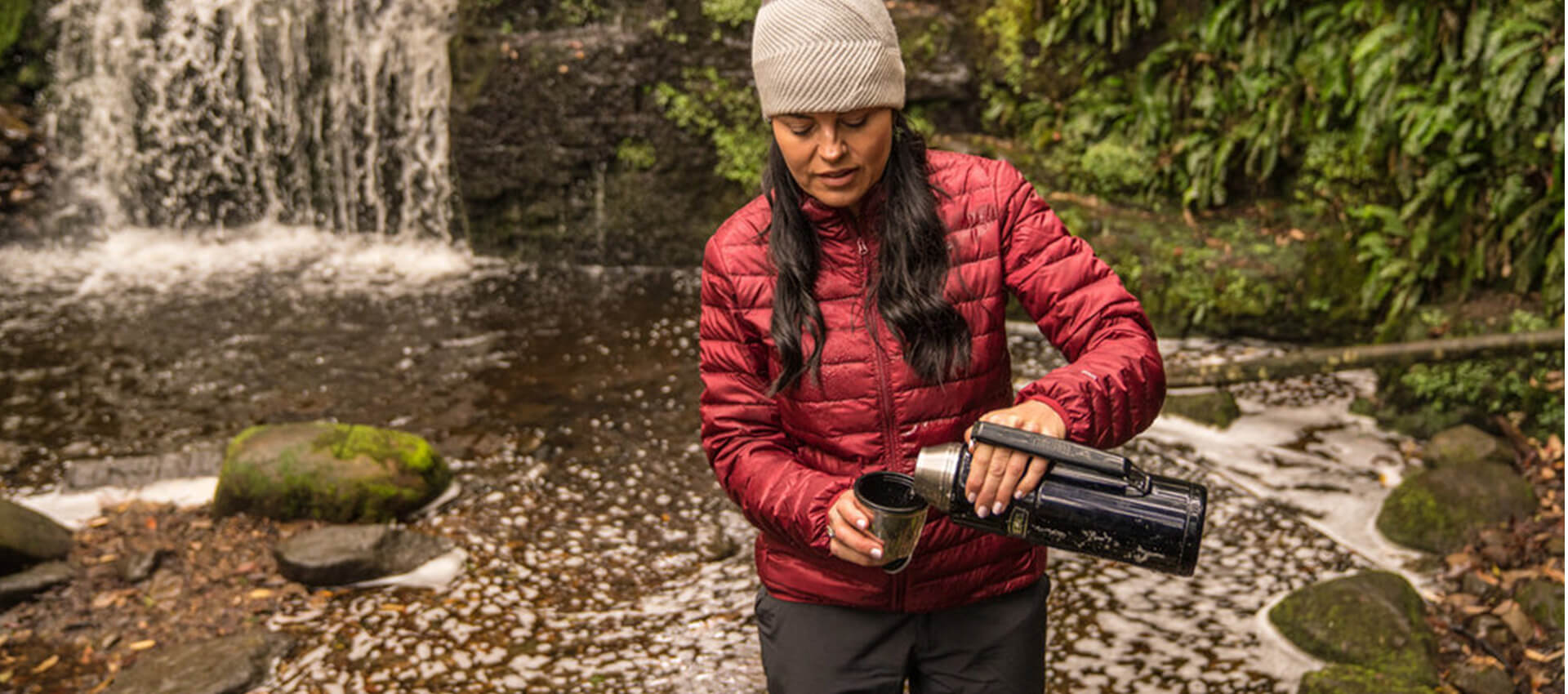
Wearing the right clothing when camping in winter is vital. The best way to dress for winter camping comprises three distinct layers to help you stay warm, dry and comfortable - base, middle and outer layers. Good base layer clothing in the form of thermals keeps you dry and warm by drawing sweat away from your skin. Good thermals also prevent chafing and blisters. In terms of fit, thermals should sit close to your skin, so they can repel moisture and trap heat in the way they're intended. The type of material your thermals are made from can affect your comfort levels. Polypropylene works similar to synthetics but is harder-wearing, easier to wash and quicker to dry. Natural materials like merino wool keep you extra warm and wick away more moisture than synthetics but they do take longer to dry. Good middle-layer clothing acts as insulation, trapping any heat that may have escaped your thermal layer. The middle layer includes beanies, jumpers, fleeces, vests and tights. Good mid-layer clothing also offers excellent warmth for weight, so look for gear made from lightweight fleece, merino or down. Outer layer clothing refers to jackets and gloves - the gear that keeps the wind, rain and snow out. To get the best bang for your buck, look for clothing that has high waterproofing and breathability ratings, so your sweat can get out but water can't get in.
Camp Comfortably In Winter At Anaconda Today
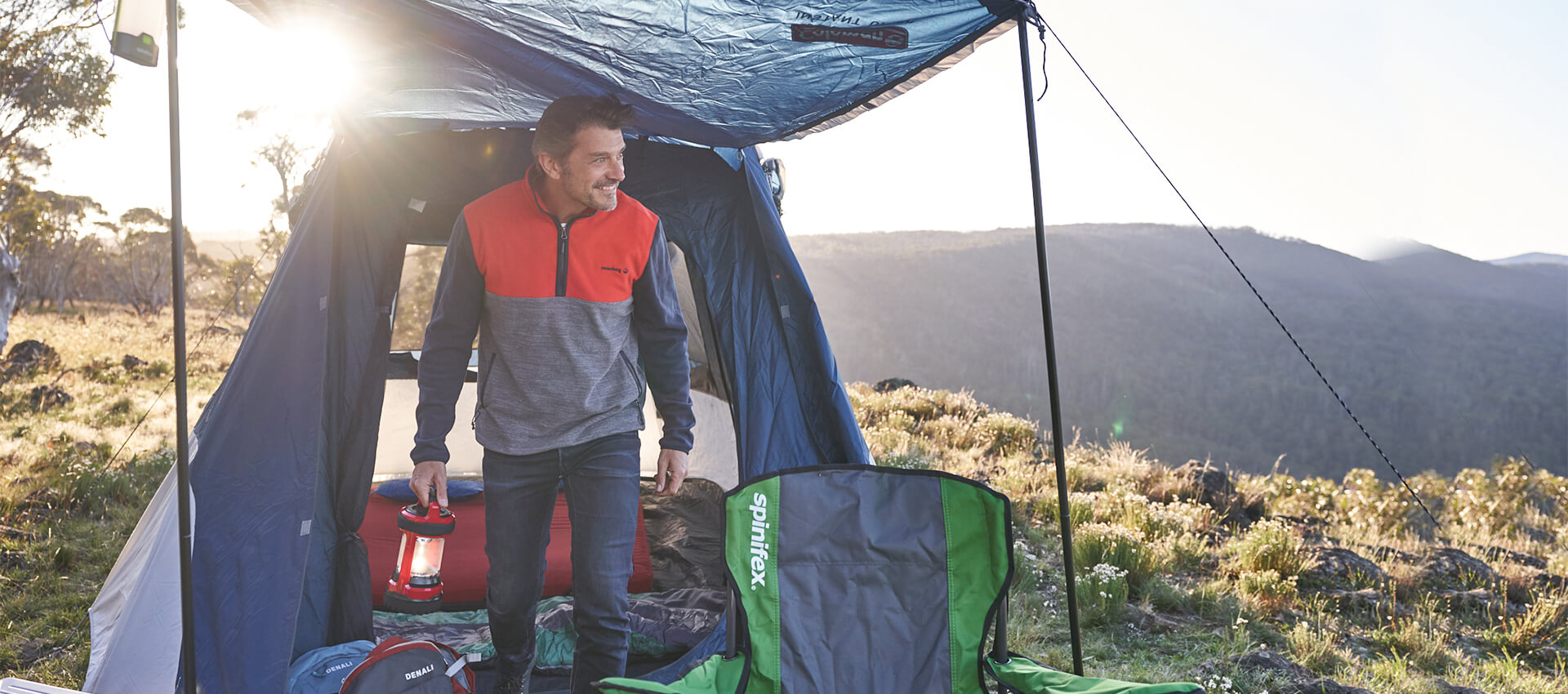
The weather outside might be cold, windy and damp but don't let that stop you from getting out and about, and into the wilds. Talk to an Anaconda expert about helping you get set for camping when it's cooler. Make sure you check out our Adventure Centre for more helpful tips and exciting destinations that you can visit with your friends, loved ones and family. If you liked our How To Stay Warm While Camping In Winter article, then you might also like some of our other articles for awesome destinations and tips such as:
- Complete Guide On Staying Warm When Winter Camping
- The Main Benefits Of Having A Portable Camping Heater
- Australia's Best Winter Camping Spots
- Tent Buying Guide
Find your local Anaconda store and check out our extensive camping range for your next outdoor adventure